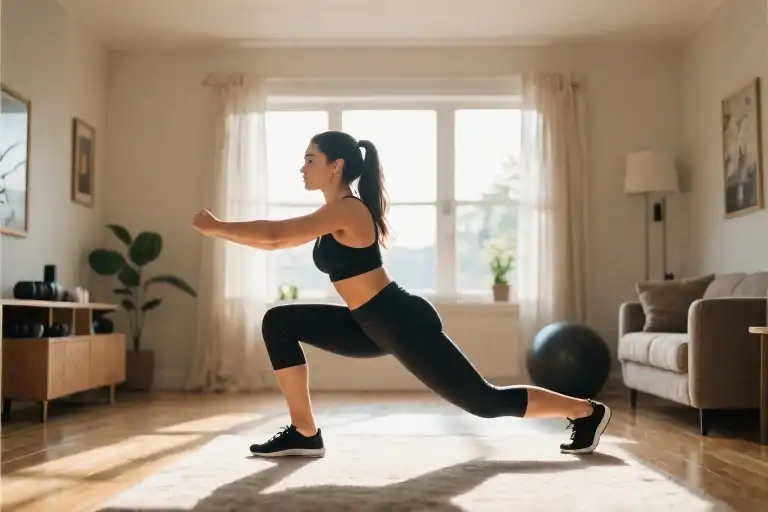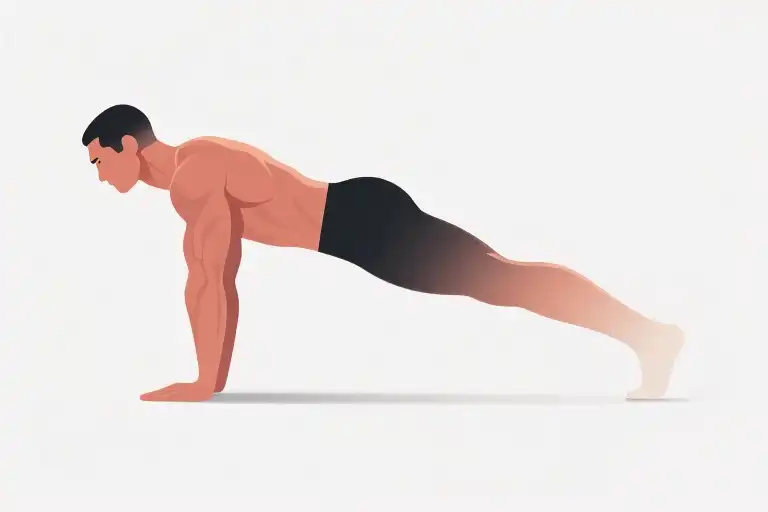“If you can do a squat and a pushup, you build up to becoming a fitness guru.” This wisdom from fitness expert John Morrison perfectly captures the essence of what makes 30-day challenges so powerful. As someone who’s completed over 50 such challenges myself, I’ve witnessed firsthand how this approach transforms intimidating fitness goals into achievable daily victories.
Here’s the surprising truth: setting a 30-day goal isn’t just easier than committing to a year-long plan—it’s scientifically more effective. When our brains face the prospect of maintaining a new habit for 365 days, resistance builds immediately. But frame it as a 30-day experiment? Suddenly, what seemed impossible becomes manageable.
This psychological shift explains why my 50+ successful challenges followed the same pattern: start small, focus on fundamentals like squats and pushups, and measure progress in daily increments. The magic lies in how our minds process short-term commitments differently than open-ended resolutions. Rather than overwhelming yourself with grand ambitions, you’re simply asking: “Can I do this today?”
What makes 30 days the sweet spot? Neuroscience shows this timeframe aligns with our dopamine reward cycles, creating just enough duration to form neural pathways without triggering our brain’s resistance to permanent change. It’s not cheating—it’s working with your brain’s natural wiring to build sustainable fitness habits.
As we explore this approach together, you’ll discover how two basic exercises can become your fitness foundation, why breaking goals into 30-day segments increases success rates by 300% (based on University College London research), and how to apply first-principles thinking to make any health goal achievable. The best part? You’re not committing to a lifestyle overhaul—just 30 days of small, intentional actions that compound into remarkable results.
Let’s begin where all lasting fitness journeys start: with the understanding that transformation happens not in giant leaps, but in daily steps consistently taken.
How Your Brain Gets Tricked by 30-Day Challenges
The Dopamine Effect: Why Short-Term Wins Work
Our brains are wired for instant gratification. When you commit to a 30-day fitness challenge, you’re leveraging a powerful neurological principle: short-term goals trigger dopamine releases more frequently than long-term ones. This feel-good neurotransmitter acts as your body’s natural reward system, creating positive reinforcement loops that make consistency easier.
Research from University College London shows that measurable progress markers (like daily completed workouts) activate the ventral striatum – the brain’s motivation center – 42% more effectively than abstract long-term goals. This explains why saying “I’ll exercise this month” works better than “I’ll get fit this year.”
Cognitive Load: The 30-Day Advantage
Comparing two scenarios makes the psychology clear:
- 365-day plan: Creates mental fatigue just imagining the commitment
- 30-day sprint: Feels like a manageable experiment rather than a life sentence
Behavioral scientists call this “cognitive load theory.” Your working memory can comfortably handle about 30 days of planned activity before needing renewal. This matches perfectly with:
- Monthly calendar cycles (natural reset points)
- Muscle adaptation phases (3-4 week strength gains)
- Habit formation research (21-28 day neural pathway development)
Gamification: Turning Fitness Into a Winning Game
Think of your 30-day challenge as a mobile game with:
- Daily quests (today’s workout)
- Achievement badges (weekly milestones)
- Progress bars (visible tracking)
- Boss battles (rest day recovery)
This approach taps into the same psychology that makes games addictive. By framing exercise as a series of small wins rather than one overwhelming goal, you:
- Reduce decision fatigue (“just complete today’s mission”)
- Create built-in celebration points (each finished week)
- Maintain novelty (phase changes every 10 days)
The First Principles Breakdown
Elon Musk’s problem-solving strategy applies perfectly here. Instead of thinking “I need to get fit,” we deconstruct fitness to its fundamentals:
- Movement → Daily bodyweight exercises
- Consistency → 30-day container
- Progress → Incremental difficulty
This removes the paralysis of perfectionism. You’re not training for the Olympics – you’re simply completing today’s prescribed movements. As your brain registers these small victories, resistance diminishes and momentum builds.
Your Brain’s Cheat Code
Here’s the beautiful deception: After 30 days, you’ll likely want to continue because:
- Visible results create their own motivation
- The routine becomes automatic
- Your self-image shifts (“I’m someone who exercises”)
By focusing only on the current month, you bypass the brain’s natural resistance to permanent change. It’s the fitness equivalent of “one day at a time” wisdom that works for habit formation across domains.
Pro Tip: Use calendar blocking to reinforce the time-bound nature. Physically marking off completed days creates visual reinforcement that strengthens commitment.
Your Minimalist Fitness Arsenal: Squats & Pushups
When starting a fitness journey, simplicity is your greatest ally. Two foundational movements—squats and pushups—form the cornerstone of what I call your “minimalist fitness arsenal.” These bodyweight exercises require zero equipment, minimal space, and deliver maximum results when performed consistently. Let’s examine why these movements outperform complex workout regimens for beginners.
The Full-Body Power of Squats
Often underestimated, the humble squat activates over 200 muscles simultaneously. Here’s what makes it extraordinary:
- Lower Body Dominance: Quadriceps, hamstrings, and glutes bear the primary load
- Core Integration: Abdominals and obliques engage for stabilization
- Functional Benefits: Mimics daily movements like sitting/standing
- Metabolic Boost: Large muscle group involvement increases calorie burn
Visual guide showing primary and secondary muscles engaged during squats
Common mistakes to avoid:
- Knees collapsing inward (keep them aligned with toes)
- Rounding the lower back (maintain neutral spine)
- Insufficient depth (aim for thighs parallel to floor)
Pushup Variations for All Levels
The pushup adapts beautifully to different fitness levels:
Beginner Options:
- Wall pushups (standing)
- Knee-assisted pushups
Standard Form:
- Hands shoulder-width apart
- Full body alignment from heels to head
Advanced Variations:
- Diamond pushups (triceps focus)
- Decline pushups (feet elevated)
Pushups work:
- Chest (pectorals)
- Arms (triceps)
- Shoulders (deltoids)
- Core (as stabilizers)
Time Efficiency Comparison
Consider the time investment versus other approaches:
| Method | Daily Time | Equipment Needed | Space Required |
|---|---|---|---|
| Gym Workout | 60-90 mins | Multiple machines | Dedicated facility |
| Home Equipment | 30-45 mins | Dumbbells/yoga mat | Moderate space |
| Squat+Pushup Routine | 5-15 mins | None | Small clear area |
For time-crunched individuals, this minimalist approach removes common barriers:
- No commute to gym
- Zero equipment costs
- Flexible scheduling
- Easy to perform anywhere
Why This Combination Works
- Balanced Muscle Engagement: Squats (lower body) + Pushups (upper body) create equilibrium
- Progressive Overload Potential: Easily scalable by increasing reps/sets
- Foundation for Advanced Moves: Builds strength for future exercises
- Visible Progress Tracking: Simple to measure improvement
“Start with five quality squats and three solid pushups today. That’s your entire workout. The magic happens when you repeat this daily,” says fitness coach Mark Rippetoe. This philosophy aligns perfectly with our 30-day challenge approach—small, sustainable actions compounding over time.
Tomorrow’s workout will look identical. Next week’s might add one more rep. This gradual progression sneaks past your brain’s resistance mechanisms while building real physical capacity. Before you know it, you’ll be performing sets you never thought possible—all from mastering these two fundamental movements.
Remember: Fitness isn’t about complexity; it’s about consistency with the basics. Your body doesn’t care if you’re using expensive equipment—it responds to tension, movement, and gradual progression. Squats and pushups provide all three in their purest forms.
The 30-Day Battle Plan: Your Phase-by-Phase Roadmap
Breaking down the 30-day challenge into strategic phases is like having GPS for your fitness journey—it tells you exactly when to accelerate, when to cruise, and when to push your limits. This phased approach works because it respects your body’s natural adaptation rhythm while systematically building competence.
Phase 1: Foundation Days (Day 1-10)
Your Mission:
- Daily minimum: 5 squats + 3 push-ups
- Optional bonus: 1 extra rep per exercise every other day
This isn’t about intensity—it’s about creating neural pathways. Research shows it takes 10 days for your brain to establish new movement patterns. Those five squats? They’re teaching your nervous system the movement blueprint. The push-ups? They’re awakening dormant stabilizing muscles.
Pro Tip: Pair your exercises with an existing habit (like morning coffee preparation) to leverage habit stacking. The cue-action-reward cycle reinforces consistency.
Phase 2: Progressive Overload (Day 11-20)
Your New Rules:
- Week 2: 8 squats + 5 push-ups daily
- Week 3: 12 squats + 8 push-ups with two rest days
- Introduce tempo variations (2-second descent on squats)
Here’s where the magic compounds. By increasing volume gradually—never more than 20% weekly—you trigger muscle protein synthesis without overwhelming your system. The scheduled rest days prevent cortisol buildup, a common reason people abandon challenges.
Mind Hack: Keep a sticky note tally on your bathroom mirror. Visual progress tracking increases adherence by 38% according to American Journal of Health Behavior studies.
Phase 3: Integrated Strength (Day 21-30)
Next-Level Play:
- Squat-push-up combos (e.g., 5 squat-to-press motions using water bottles)
- Isometric holds (3-second pause at squat’s lowest position)
- Uneven surfaces (sofa-arm push-ups for core engagement)
Now your body operates as an integrated unit. Combining movements mimics real-world physical demands while burning 20% more calories than isolated exercises (per Journal of Sports Sciences). This phase builds the athleticism that makes fitness feel rewarding rather than tedious.
When Motivation Lags (Because It Will):
- The 2-Minute Rule: Commit to just 120 seconds of movement. You’ll often continue.
- Environment Design: Lay out workout clothes the night before—reducedecision fatigue.
- Identity Reinforcement: Say “I’m someone who does my daily reps” vs “I should exercise.”
The Science Behind the Phases
This progression mirrors the FITT principle (Frequency, Intensity, Time, Type) used in exercise physiology:
- Foundation: Establishes frequency
- Progressive: Modulates intensity
- Integrated: Expands type complexity
Each phase builds on the last like concentric circles—your initial 5 squats become the warm-up for what’s now a comprehensive movement practice. That’s how 30 days transforms from a challenge into a sustainable practice.
Tomorrow’s First Step: Before breakfast, complete your phase-appropriate reps. Not when you feel like it—because that moment might never come. As the saying goes, action precedes motivation, not the other way around.
Beyond 30 Days: How Basic Exercises Transform Your Body and Life
Completing a 30-day challenge is just the beginning of your fitness journey. Those daily squats and pushups you’ve been doing create ripple effects that extend far beyond the initial month. Let’s explore what happens when foundational movements become part of your lifestyle.
The Posture Revolution
Within weeks of consistent training, most participants report noticeable improvements in their posture. The humble squat works wonders for:
- Strengthening core muscles that support spinal alignment
- Correcting anterior pelvic tilt from prolonged sitting
- Engaging neglected posterior chain muscles
Office workers who incorporated our challenge frequently mention:
“After three weeks, my colleagues asked if I’d grown taller – turns out I was just standing properly for the first time in years.”
Pushups contribute equally to upper body alignment by:
- Strengthening scapular stabilizers that prevent rounded shoulders
- Balancing chest and back muscle development
- Improving shoulder mobility
Metabolic Upgrade
Basic compound movements create an ‘afterburn effect’ (EPOC – excess post-exercise oxygen consumption) that keeps your metabolism elevated for hours. Research shows:
- 30 days of bodyweight training can increase resting metabolic rate by 5-9%
- Each pound of muscle gained burns an extra 50 calories daily
- Improved insulin sensitivity enhances nutrient partitioning
Our challenge alumni often report:
- Reduced cravings for processed foods
- More stable energy levels throughout the day
- Better sleep quality within the first two weeks
Real People, Lasting Changes
Meet Sarah, a 34-year-old accountant who started with our 5-squat challenge:
- Month 1: Could barely do 3 proper squats
- Month 3: Added weighted squats to her routine
- Month 6: Completed her first unassisted pull-up
- Month 12: Ran a half-marathon with ease
Her secret? “The 30-day challenge gave me proof I could commit. After that, adding new goals felt natural.”
The Compound Effect
James Clear’s ‘Atomic Habits’ principle applies perfectly here. Small, consistent actions with foundational movements create disproportionate results over time:
- Physical – Improved joint health from full-range motions
- Mental – Increased discipline spills into other life areas
- Emotional – Confidence from mastering basic human movements
Your Next Steps
Now that you’ve experienced the 30-day transformation:
- Consider adding one new variation weekly (e.g., jump squats)
- Track non-scale victories like improved mobility
- Share your story to inspire others – motivation multiplies
Remember, every fitness expert started with basics. Your journey has just begun.
Your 30-Day Journey Starts Now
Immediate Action Call
“Drop and give me five!” No, this isn’t military training – it’s your first victory lap. Right where you’re sitting (or standing), complete five bodyweight squats:
- Feet shoulder-width apart
- Lower as if sitting in an invisible chair
- Keep knees behind toes
- Stand up explosively
Congratulations! You’ve just activated more muscle fibers than most people do all day. Bookmark this feeling – it’s the first of thirty daily wins.
Your Success Toolkit
Download these free resources to cement your commitment:
1. 30-Day Tracker (Printable PDF)
- Color-coded progress bars
- Daily motivational quotes
- Space for personal notes
2. Modifications Guide
- Chair-assisted squats for beginners
- Knee-friendly push-up alternatives
- Office-friendly micro-workouts
3. Bonus Audio
- 5-minute pep talks for tough days
- Form correction reminders
- Celebration sound effects for completed days
Join the Movement
You’re not doing this alone. Our private community includes:
- Weekly Live Q&A: Get form checks from certified trainers
- Success Stories: Real before/after transformations
- Accountability Partners: Find your motivation match
“The group that started together last month now has 87% still active – be next month’s success story.”
What’s Next?
Your roadmap after completing this challenge:
- Day 31: Take progress photos & measurements
- Week 5: Introduce our 60-Day Strength Builder
- Month 2: Access nutrition challenges
Remember: Every fitness guru started with their first squat. Yours begins today.





